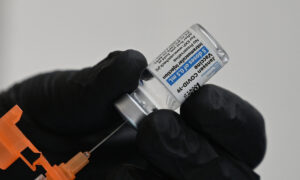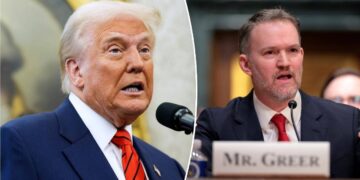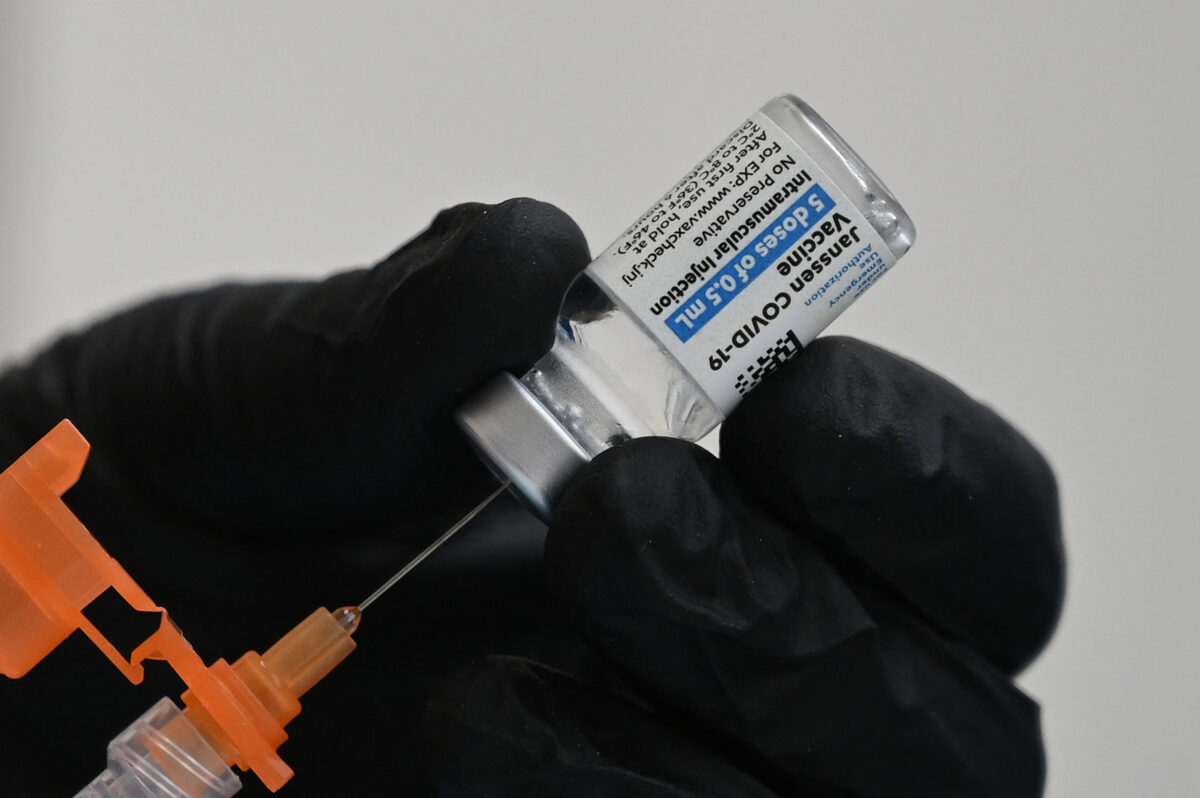
One of the four COVID-19 vaccines authorized in the United States is no longer available, the country’s public health agency says.
The Johnson & Johnson COVID-19 vaccine “is no longer available in the U.S.,” the U.S. Centers for Disease Control and Prevention (CDC) said in a recent update.
That’s due to the vaccine expiring on May 7.
Health care workers were advised to dispose of any remaining doses in accordance with regulations.
The CDC and Johnson & Johnson did not respond to requests for comment.
U.S. regulators first cleared the jab in February 2021, giving Americans an alternative to the messenger RNA-based Moderna and Pfizer COVID-19 vaccines. Johnson & Johnson’s vaccine became popular in part due to its requiring only a single dose. The messenger RNA vaccines each have a primary series of two doses.
But uptake slowed after U.S. authorities paused recommending the vaccine due to concerns about a reported link to a combination of blood clotting and low platelet levels, thrombosis with thrombocytopenia syndrome (TTS), which can cause death. About 15 percent of the post-vaccination TTS cases have been fatal.
Regulators limited the availability of the vaccine in 2022 because experts determined it caused TTS.
Since March, recipients have also been warned that they face an increased risk of myocarditis, or heart inflammation, and a related condition called pericarditis. All four COVID-19 vaccines authorized in the United States present an increased risk of myocarditis, primarily for young males.
As of May 11, 19 million Johnson & Johnson shots have been administered, compared to more than 403 million Pfizer shots, more than 252 million Moderna shots, and about 89,000 Novavax shots, according to data reported to the CDC.
“The vast majority of people in the US who were vaccinated against COVID-19 received either the Pfizer or Moderna vaccines. Very few individuals received the J and J vaccine. Therefore, this new development regarding J and J’s vaccine no longer being available in the US is not monumental,” Dr. Michael Saag, an infectious diseases expert at the University of Alabama at Birmingham, told The Epoch Times via email.
Some 31.5 million Johnson & Johnson shots purchased by the federal government had been distributed to states and other jurisdictions, which means about 12.5 million doses will go to waste.
The U.S. government in 2020 agreed to pay approximately $1 billion for 100 million doses of the vaccine, which is technically produced by Johnson & Johnson subsidiary Janssen.
Earnings Call
Executives said in an earnings call in April that they expected no more COVID-19 vaccine sales moving forward.
“We do not anticipate material sales beyond that which were recorded in the first quarter as our contractual commitments are complete,” Joseph Wolk, the company’s chief financial officer, said on the call.
Johnson & Johnson reported $747 million in sales during the three-month period that ended on March 23, but all of the sales were made outside the United States.
Analysts had forecast lower COVID-19 vaccine sales prior to the earnings report.
Johnson & Johnson reported U.S. sales for its COVID-19 vaccine totaling $72 million. It has not reported vaccine sales in the United States since 2022’s second quarter.
The U.S. Food and Drug Administration’s emergency use authorization for Janssen’s vaccine is still viable, according to the agency’s website. The authorization is for adults who choose to receive the vaccine because they would “not otherwise … receive a COVID-19 vaccine.” The authorization is for a single-dose primary dose and a booster dose.
Recommendations
The CDC is retaining its recommendation that people who received Johnson & Johnson’s vaccine get another COVID-19 vaccine dose.
Adults who received one or dose Johnson & Johnson vaccine doses “are recommended to receive 1 bivalent mRNA dose (Moderna or Pfizer-BioNTech) at least 2 months after completion of the previous dose,” the CDC says on its website.
The Moderna and Pfizer vaccines were updated in 2022 to include elements of the Wuhan and Omicron strains. The bivalent shots completely replaced the old messenger RNA vaccines in the spring.
Saag said the recommendations make sense in light of how Johnson & Johnson’s vaccine only targeted the Wuhan variant.
“The bivalent booster will broaden the immunity for those receiving it, whether they had the J and J initial vaccine or the initial vaccine series (without a booster) with either Pfizer or Moderna vaccines,” Saag said.
Clinical trial efficacy estimates for the bivalent vaccines have still not been made public but, according to data from the companies, the vaccines provide a better immune response than the older vaccines.
Observational data, though, indicate that bivalent vaccines are not very effective against infection and only provide short-lived protection against hospitalization.
“The current vaccines are out-of-date, any new ones will be out-of-date by the time they are generally available, and mostly everybody already has SARS-CoV-2 antibodies anyway,” Dr. Harvey Risch, professor emeritus of epidemiology at the Yale School of Public Health, told The Epoch Times previously.
“At this point, the vaccines are thus not generally useful products for serving a public health function.”

















































